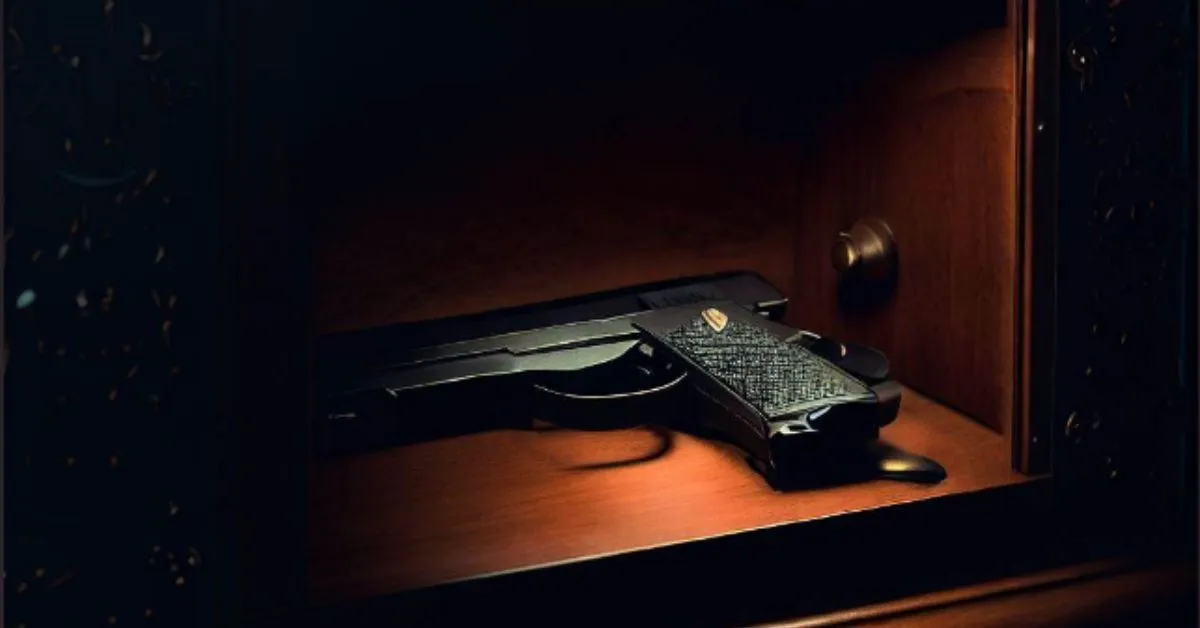Owning firearms comes with a significant responsibility for safety and security.
One way to ensure your firearms are safely stored, yet easily accessible in case of an emergency, is by creating a hidden gun safe.
How to make a hidden gun safe is a topic that addresses both responsible firearm ownership and the need for discreet storage solutions.
A hidden gun safe not only adds an element of surprise and security to your home but also keeps your firearms away from curious hands.
In this comprehensive guide, we will walk you through the step-by-step process of making your hidden gun safe.
How To Make A Hidden Gun Safe-
To create a hidden gun safe, select suitable furniture, cut openings, install secure hinges and a locking mechanism, and design a concealed trigger mechanism. Line the interior with protective padding, test for smooth operation, and ensure compliance with firearm storage laws for a secure and discreet storage solution.
So this was in short answer to our query Well now let us discuss it in detail step by step how to execute it.
Disclaimer:
Before proceeding with this project, be sure to check and comply with all local, state, and federal laws regarding firearm storage and accessibility. Safety should always be your top priority.
Materials and Tools:
- Cabinet or Furniture Piece: Choose a cabinet, bookshelf, or furniture piece that can house your firearms without arousing suspicion. Ensure it has enough space inside to accommodate your guns and other essentials.
- Locking Mechanism: You will need a locking mechanism, which can be either electronic or mechanical, to secure your hidden compartment.
- Hinges: High-quality hinges are crucial to ensure smooth operation and to keep the hidden compartment hidden.
- Magnetic Lock: For a seamless hidden compartment, consider a magnetic lock that can be operated with a hidden magnetic key.
- Magnet: For a magnetic lock, you’ll need a strong magnet that activates the lock.
- Trigger Mechanism: This is what opens the hidden compartment. It can be as simple as a hidden button or a more complex mechanism.
- Foam or Velvet Padding: To protect your firearms and accessories from damage.
- Drill and Bits: For making holes for hinges, locks, and any other necessary openings.
- Screwdriver and Screws: For securing hinges, locks, and other components.
- Wood Glue: To strengthen joints and ensure a solid construction
Step-by-Step Guide on how to make a hidden gun safe:
1. Select the Furniture Piece:
Begin by selecting a suitable piece of furniture, such as a cabinet or bookshelf, that can be modified to house your firearms. Ensure that the furniture piece is solid and secure, as it will need to hold the weight of your guns and provide concealment.
2. Determine the Location:
Decide where you want to create the hidden compartment within the furniture piece. It should be easily accessible to you but not obvious to anyone else. The back or bottom of the furniture piece often works well for this purpose.
3. Cut Openings:
Using a saw or a drill with an appropriate bit, cut openings for the hidden compartment. Ensure that the openings are large enough to accommodate your firearms and any additional items you plan to store.
4. Install Hinges:
Attach the hinges to the cut openings so that they can be used to open and close the hidden compartment. Ensure the hinges are securely fastened to the furniture piece.
5. Install Locking Mechanism:
Depending on your choice of locking mechanism (electronic, mechanical, or magnetic), follow the manufacturer’s instructions to install it securely. Ensure that the lock is concealed within the furniture and not easily visible.
6. Create a Trigger Mechanism:
Design a trigger mechanism that will allow you to open the hidden compartment. This can be as simple as a hidden button, a false book spine, or a concealed latch. Test the mechanism to ensure it works smoothly.
7. Add Padding:
Line the interior of the hidden compartment with foam or velvet padding to protect your firearms and accessories from scratches and damage.
8. Secure Your Firearms:
Place your firearms and any additional items inside the hidden compartment. Ensure they are stored securely and will not shift during operation.
9. Test and Refine:
Test the hidden gun safe several times to ensure it opens and closes smoothly. Make any necessary adjustments to the locking and trigger mechanisms for reliability and security.
10. Concealment:
Finally, consider adding additional elements to conceal the hidden compartment further. This could include decorative items or false fronts to divert attention away from the safe.
Conclusion-
In conclusion, mastering the art of how to make a hidden gun safe is a practical and responsible approach to firearm storage.
This comprehensive guide has meticulously detailed the crucial steps, from selecting the right furniture piece to installing locking mechanisms and trigger systems.
By prioritizing safety, security, and compliance with local laws, individuals can confidently create a discreet and accessible storage solution that ensures peace of mind while effectively safeguarding their firearms.

